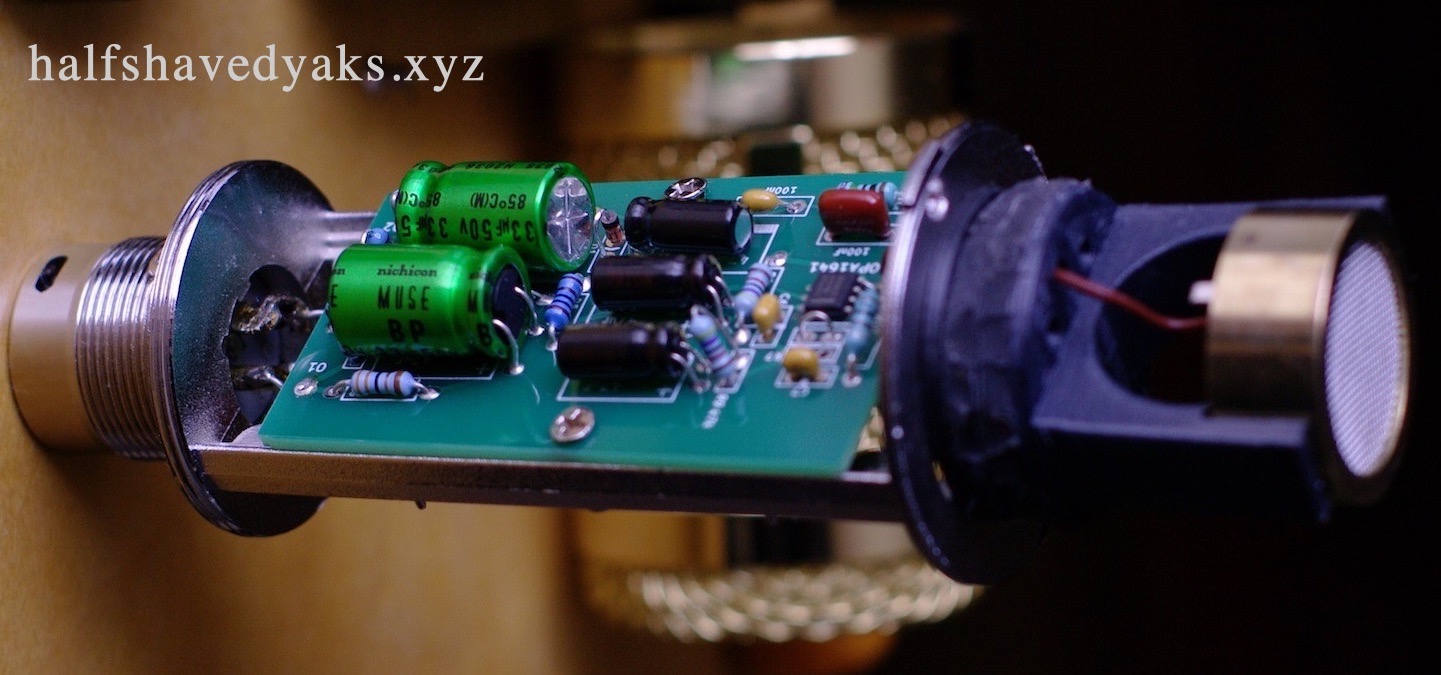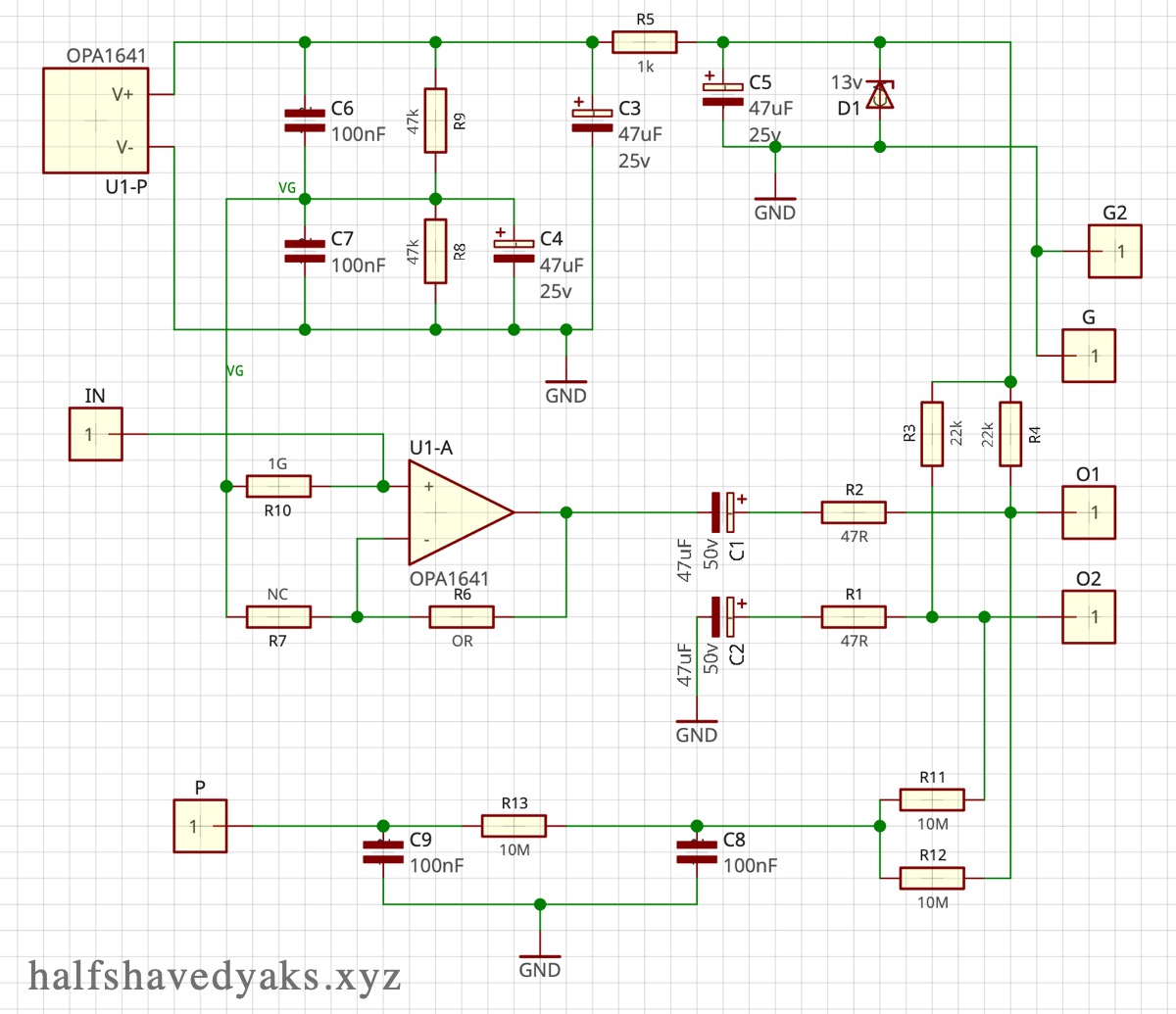A single opamp microphone circuit
click to enlarge photo
Documentation in progress - in the meantime ask me if you have questions
email me at parenthetical at this domain
This board has an opamp-driven circuit on a board designed for cheap donor mics the BM700 and BM800.
This is my single opamp redesign of DJJules' dual opamp pcb here: True-Condenser-OPA-Mics
This circuit is a super simple single opamp mic headamp. It is really nothing but a single opamp - all the other components are just providing power to the opamp correctly, impedance balancing the output and so on.
The input terminal is pin 3 of the opamp where it joins the 1G resistor. The other side of the capsule should go to the polarisation voltage supply (for true condenser capsules) or to ground, (for electret capsules). This circuit is not intended for electret capsules with an internal fet.
I have used an OPA1641 this is a very good sounding low noise modern opamp with relatively low current requirements (1.8ma). The board is made with SOIC8 solder pads - so you can use any SOIC8 single fet input opamp - but if you use one with higher current requirements you may need to lower the values of R3 and R4. You'll also want an opamp with very low noise.
Z1 is a 15v zener - this gives loads of headroom, probably more than needed. The voltage at the opamp positive power pin is 13.7V, so the opamp is running on +/- 6.8v.
The self noise of this circuit is about 1dB lower than the Schoeps circuit, when wired in unity gain. When configured with 2x gain as per the schematic the self noise is 5dB higher than the Schoeps. The Schoeps gain/sensitivity is approx 1dB less than this circuit in 2x mode and 4dB higher than this circuit in unity mode. The upshot of all the this is that this circuit has higher self noise than a Schoeps, relative to sensitivity, but that this difference is not noticeable in real life use as it is drowned out by ambient noise, and by the capsule self-noise. All these figures are approximate. I intend to add more detailed noise info later.
The gain can be set to the desired level using the ratio of R9 to R6 in the normal way for an opamp. The schematic shows them for a total gain of 2 (+6dB) to match Jules' circuit or a Schoeps. However I have found this inconveniently high output for some of my mic preamps so I have built mine with a gain of 1 (unity), by omitting R9 and replacing R6 with a wire link.
Based on quite limited use so far I like the sound of this circuit quite a lot, I may prefer it to the Schoeps circuit, although I haven't used it enough yet to be sure.



